#Marine fossils
Explore tagged Tumblr posts
Text
Ehehehehee enjoy this VERY small portion of my fossil collection all collected in maine

















If anyone want to know how old these are here’s a map of maine so you can guess
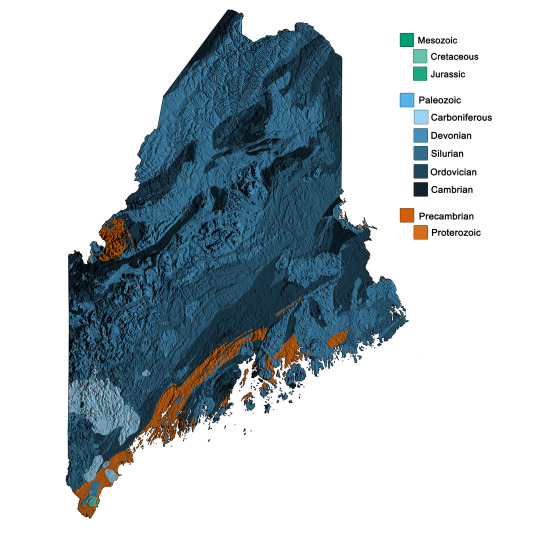
I go ‘rock picking’ with my mom and we basically climb around on piles of rocks in gravel pits and steal the fossils so they don’t get destroyed by gravel pit machinery. I don’t like put parties but I sure as hell love rock picking in pits!!
I don’t give a shit nor do I know if this is legal to do so I can’t advise on whether or not you should also go rock picking you may get into trouble you may not WHO KNOWS!!
#Maine#fossils#maine fossils#Marine fossils#Paleontology#maine paleontology#fossil collection#Cool fossils#Shell fossils
7 notes
·
View notes
Photo

Fossil Gastropods – Ampullina & Clavilithes willemetti (Dehayes) – Middle Eocene, Lutetian – Mourne, Damery, France
Authentic Fossil Gastropods – Ampullina & Clavilithes willemetti (Dehayes) – Middle Eocene, Lutetian – Mourne, Damery, France
About the Fossils:
This is a high-quality fossil gastropod specimen featuring Ampullina and Clavilithes willemetti (Dehayes), preserved from the Middle Eocene Lutetian stage (~48-41 million years ago). These beautifully fossilized marine snails were part of an ancient warm-sea ecosystem that flourished in what is now Mourne, Damery, France.
The Ampullina genus is known for its rounded, smooth shell structure, while Clavilithes willemetti features a more elongated, ornate form. These gastropods belonged to the rich and diverse marine fauna of the Eocene epoch, thriving in tropical and subtropical seas.
Geology & Formation:
Geological Age: Middle Eocene, Lutetian (~48-41 million years ago)
Formation: Marine sedimentary deposits
Location: Mourne, Damery, France
Preservation: Excellent fossilization, showcasing intricate shell details
Why This Fossil?
✔ 100% Genuine Specimen – Comes with a Certificate of Authenticity
✔ Highly Collectible – From the renowned Alice Purnell Collection
✔ Perfect for Display or Study – Ideal for fossil collectors, students, and paleontology enthusiasts
✔ Scale Rule/Cube = 1cm – See photos for full sizing
The fossil in the photo is the exact specimen you will receive!
Secure Packaging & Fast Shipping – Your fossil will be carefully packed for a safe journey!
#Fossil Gastropods#Ampullina fossil#Clavilithes willemetti#Eocene gastropod#Lutetian fossil#Mourne fossils#Damery fossils#France fossils#marine fossils#prehistoric shell#mollusk fossil#fossilized snail#rare gastropod#paleontology#fossil collection#fossil hunting#ammonite collection#genuine fossil#Alice Purnell Collection
2 notes
·
View notes
Text
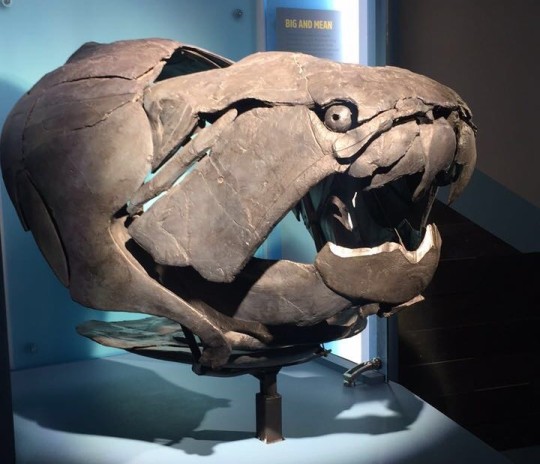

Happy Fossil Friday!
Who: Dunkleosteus sp.
name meaning: "Dunkle's bone"
pronunciation: Duncle-oss-tee-us
What: One of the most famous placoderms, or armored fish.
When: Late Devonian Period
Where: North America, Poland, Belgium, and Morocco. Best known from the Cleveland Shale.
Why are they cool?: Reaching lengths of up to 9 metres long it possessed thoracic and cranial armour (covering just anterior to the abdomen to the head). This armour consisted of bony plates that protected the head and neck and formed points over the jaw, like built in, armoured teeth for grasping and slicing.
Here is a link to a course on early vertebrate development and bony fishes from the Devonian and other periods, it is a wonderful MOOC (massive open online course) created by the University of Alberta, check it out if you want to learn more about Dunkle and his relatives!
Image Credits: (Left: M. Cross. Right: Figure 9 from Week 3 course notes of Paleontology: Early Vertebrate Evolution on Coursera.com)
#palaeontology#paleontology#fossil friday#fossils#paleo#palaeoart#paleoart#dunkleosteus#marine fossils#placoderm#fish#early vertebrate evolution#armoured fish
14 notes
·
View notes
Text



Potamon sp. Crab Fossil; Pleistocene Epoch (2.58 - 0.012 MYA)
#fossil#fossils#crab fossil#prehistoric#collectible fossil#fossil collection#sea fossil#marine biology#marine fossil#special collections#collectibles#crystals#geology#rocks and minerals#stone aesthetic#paleontology#naturalhistory#evolutionarybiology#natural#natural history#natural life#marine animals#gemstones#sea creatures#sea life#marine life#sea animals
17K notes
·
View notes
Text
Hedgehog-crab

Hedgehog Crab (Derilambrus angulifrons)
This spiky little crustacean belongs to the Parthenopidae family and is found in the deep waters of the Pacific Ocean.
Its spiny shell helps it blend in with rocky environments, offering protection from predators.
Despite its cute appearance, this crab is a skilled scavenger, feeding on small invertebrates and organic debris!
#crab#animals#sea#ocean#holiday season#waves#coast#seascape#cliffs#from the river to the sea palestine will be free#marine life#marine biology#marine art#fossil fish#fossilized tooth#prehistoric#eocene period#marine automation#marine animal#fossil tooth
6K notes
·
View notes
Text

BOW DOWN TO THE ANCIENT ONE
55K notes
·
View notes
Text

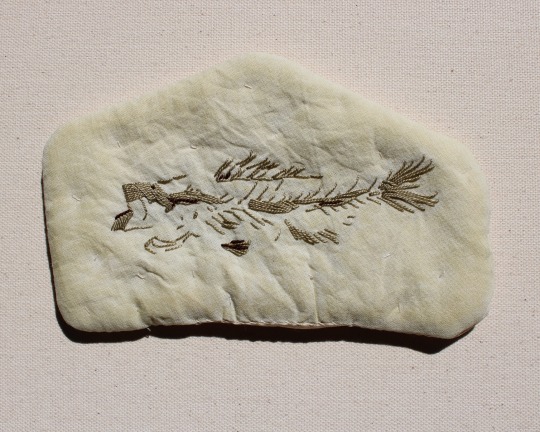
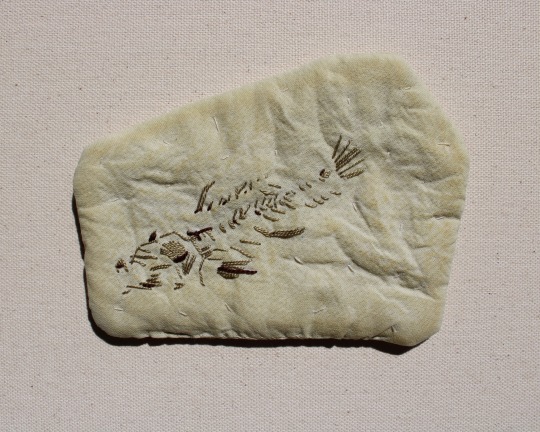

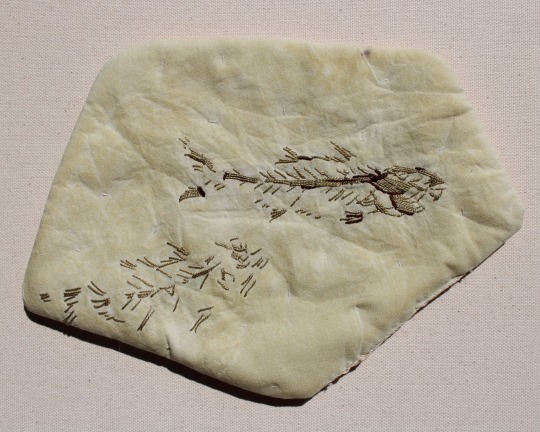
more embroidered fish fossils
#my art#fiber art#embroidery#fossils#fish fossil#fish#marine biology#rocks#quilting#hand quilting#wall quilt#trinkets
13K notes
·
View notes
Text

Coelacanth Sketch
Idea for a possible traditional canvas painting that I may try paint soon
#my art#sketch#brainstorm#coelacanth#ancient fish#marine#fish#prehistoric#Thinking of doing some irl canvas paintings based on prehistoric fish/molluscs maybe so this is me just sketching some ideas#digital art#art#living fossil#they are such cool fish
788 notes
·
View notes
Text

488 notes
·
View notes
Photo

Fossil Gastropods – Ampullina & Voluta willemett – Middle Eocene, Lutetian – Mourne, Damery, France
Authentic Fossil Gastropods – Ampullina & Voluta willemett – Middle Eocene, Lutetian – Mourne, Damery, France
About the Fossils:
This is a high-quality fossil gastropod specimen featuring Ampullina and Voluta willemett, preserved from the Middle Eocene Lutetian stage (~48-41 million years ago). These beautifully fossilized marine snails were part of an ancient warm-sea ecosystem that thrived in what is now Mourne, Damery, France.
The Ampullina genus is known for its rounded, smooth shell structure, while Voluta willemett exhibits an elongated, spiral form typical of predatory volute gastropods. These marine snails lived in shallow tropical and subtropical waters, contributing to the biodiversity of the Eocene period.
Geology & Formation:
Geological Age: Middle Eocene, Lutetian (~48-41 million years ago)
Formation: Marine sedimentary deposits
Location: Mourne, Damery, France
Preservation: Excellent fossilization, showcasing intricate shell details
Why This Fossil?
✔ 100% Genuine Specimen – Comes with a Certificate of Authenticity
✔ Highly Collectible – From the renowned Alice Purnell Collection
✔ Perfect for Display or Study – Ideal for fossil collectors, students, and paleontology enthusiasts
✔ Scale Rule/Cube = 1cm – See photos for full sizing
The fossil in the photo is the exact specimen you will receive!
Secure Packaging & Fast Shipping – Your fossil will be carefully packed for a safe journey!
#Fossil Gastropods#Ampullina fossil#Voluta willemett#Eocene gastropod#Lutetian fossil#Mourne fossils#Damery fossils#France fossils#marine fossils#prehistoric shell#mollusk fossil#fossilized snail#rare gastropod#paleontology#fossil collection#fossil hunting#ammonite collection#genuine fossil#Alice Purnell Collection
1 note
·
View note
Text
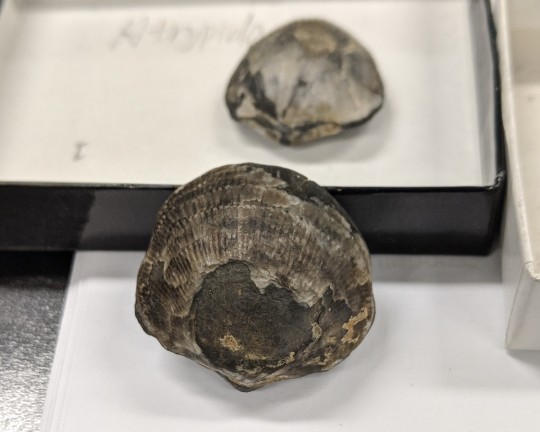

Happy Fossil Friday!
Who: Atrypids!
What: Atrypidae. A group of extinct brachiopods also called "lamp shells" because of their shape
When: Late Ordovician to the Upper Devonian
Where: Found most places other brachiopods are found (including but not limited to: China, Europe, and North America).
Fun Fact!: Like all brachiopods, one thing that sets them apart from clams (bivalves) is the filter feeding apparatus called a "lophophore". Characteristic to Brachiopoda, this structure allows the organism to feed by creating water currents that run over spiral shaped structures inside the brachiopod and filter out particles of food to be digested.
Why are they cool?: Atrypids (as well as other Brachiopods) make fantastic fossils for determining the ages of assemblages, as they are restricted to very specific ranges and if you find a certain brachiopod in your fossil bed, you can easily get a good estimate of the age.
Here is a link to a video of a dissection of an extant brachiopod Lingula for those interested in the unique internal anatomy of these critters.
Science warning for information hunters!: While fact checking some of the information used in this post, I skimmed the Wikipedia article for this group and found that they say the range of the group was Ordovician to Carboniferous, following the link they cited the information to, I saw they used the ranges for a trilobite genus, rather an actual Brachiopod group. Just fair warning to all the new and experienced science lovers out there, Wikipedia is a wonderful source to jump from, to orient yourself in a sea of confusing and often bloated information, but ALWAYS check their sources yourself!)
Happy hunting!
Image Credits: (Both) A. Johnson
#palaeontology#paleontology#fossil friday#fossils#palaeoart#paleo#paleoart#atrypids#brachiopods#brachiopoda#marine fossils
10 notes
·
View notes
Text
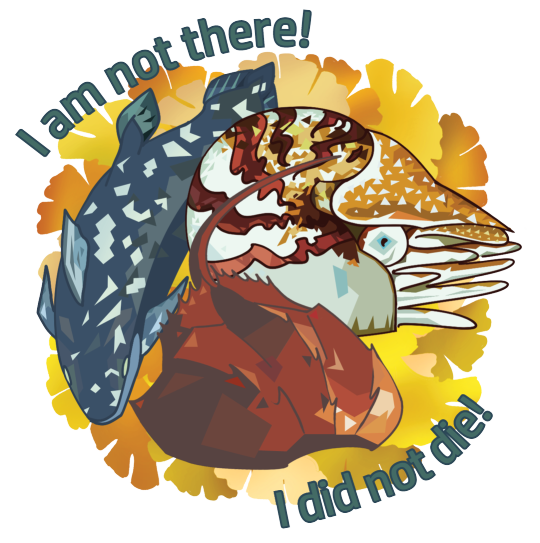
#artists on tumblr#art#illustration#artwork#myart#original art#digital art#marine biology#coelacanth#marine life#nautilus#living fossils#animals#ginkgo#fish#oceancore#ocean life#I'd say this has a paleontology vibe#but they're all still alive#... which is kind of the point#Text credit to “Do not stand at my grave and weep”#By Clare Harner
4K notes
·
View notes
Text

Living Fossils - Creatures that remain seemingly unchanged by time. Here's the Coelacanth, the Sturgeon, the Gar, the Horseshoe Crab and the Nautilus! (Gouache on 50x40cm canvas, SOLD)
#living fossils#marine biology#sea life#fish#coelacanth#sturgeon#gar#horseshoe crab#nautilus#sea creatures#marine life#gouache#traditional art#my art
12K notes
·
View notes
Text

It’s Fossil Friday! Let’s swim back in time about 85 million years to the Late Cretaceous to meet Xiphactinus, a gigantic predatory fish. This species could reach lengths of 17 ft (5.2 m) and was capable of swallowing a 6-ft- (2-m-) long fish whole! The Museum’s Xiphactinus fossils come from Logan County, Kansas, which is home to 70-ft- (21.3-m-) tall sedimentary formations. Though that might not sound like an ideal home for an ocean-dweller, the entire area was covered by a vast inland sea during the Cretaceous. See Xiphactinus in the Museum’s Hall of Vertebrate Origins!
Photo: Image no. ptc-6634 © AMNH (taken 1996)
#science#amnh#museum#fossil#nature#natural history#animals#fact of the day#did you know#fish#paleontology#late cretaceous#cretaceous#sea creatures#marine biology#marine animals#natural history museum#american museum of natural history
1K notes
·
View notes
Text
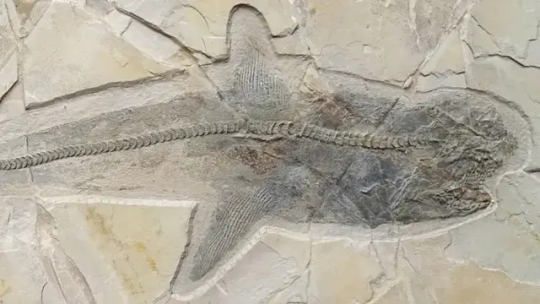
Shark News!! Fossil of an ancient shark that swam in the age of dinosaurs solves centuries-long mystery
🦈🦈🦈🦈🦈🦈🦈🦈🦈🦈🦈🦈🦈
2K notes
·
View notes